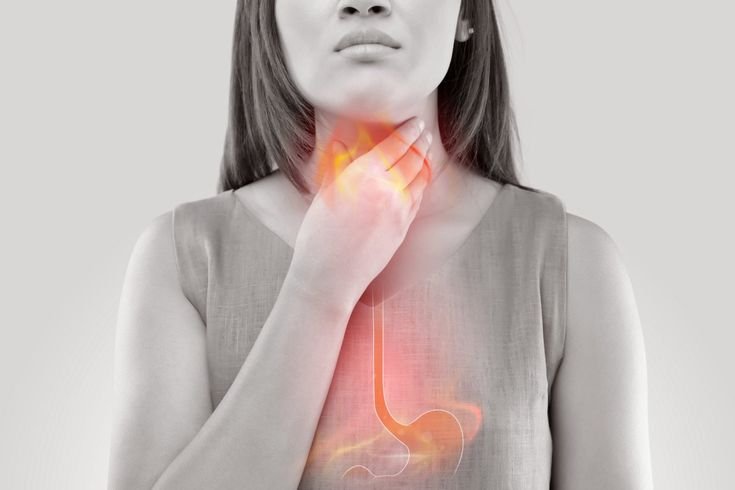What is acid reflux ( GERD ) and how to heal ?
In the bustling landscape of modern life, digestive discomforts are increasingly common. Among them, acid reflux stands out as a prevalent issue, often dismissed as mere occasional heartburn. However, for millions, it evolves into a chronic, debilitating condition known as Gastroesophageal Reflux Disease (GERD). At “Wellness Warriors,” our mission is to empower you with accurate, detailed, and actionable information to reclaim your health. This comprehensive guide will demystify GERD, explain its intricate mechanisms, and illuminate the most effective paths to healing, allowing you to live a life free from the burning grip of this widespread ailment.
Understanding the Digestive System and the Rise of Reflux
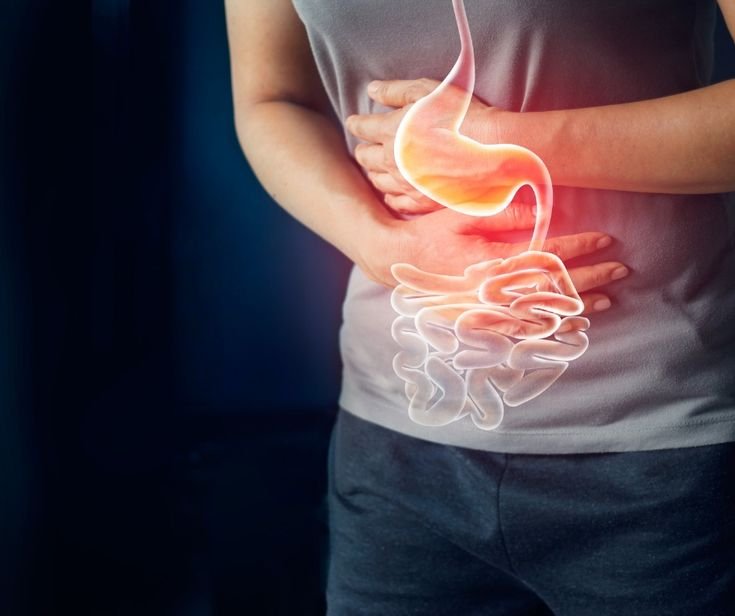
To grasp what goes wrong in acid reflux, we must first understand the marvel of our digestive system. Digestion begins in the mouth, but the critical juncture for reflux lies between the esophagus and the stomach. Food travels down the esophagus—a muscular tube—and passes through a specialized ring of muscle at its lower end, known as the lower esophageal sphincter (LES). This muscular valve acts like a one-way gate, opening to allow food and liquids into the stomach and then tightly closing to prevent the acidic stomach contents from flowing back up into the esophagus.
In individuals experiencing acid reflux symptoms, this vital gate malfunctions. When the lower esophageal sphincterrelaxes at the wrong time, or fails to close completely, highly acidic stomach acid can surge back up into the lining of the esophagus. This backwash is what causes the characteristic burning sensation in the chest or throat, commonly known as heartburn. While nearly everyone experiences occasional heartburn after a large or fatty meal, persistent and frequent occurrences signal a more serious underlying problem: Gastroesophageal Reflux Disease.
Distinguishing Acid Reflux from GERD: When Occasional Becomes Chronic

It’s crucial to differentiate between isolated episodes of acid indigestion and the chronic condition of GERD. Acid refluxdescribes the actual backflow of stomach contents. GERD, on the other hand, is a medical condition characterized by frequent acid reflux—typically two or more times a week—that causes troublesome symptoms and/or leads to complications. If you experience persistent acid reflux over a long time, it’s a strong indicator that you might have GERD.
The symptoms of GERD extend beyond just heartburn. Many individuals report a sour taste or bitter taste in their mouth, particularly after eating or lying down. Other common GERD symptoms include:
- Chest pain, which can sometimes be mistaken for heart problems.
- Difficulty swallowing (dysphagia), a sensation of food sticking in the throat.
- Regurgitation of food or sour liquid.
- Sore throat or a feeling of a lump in the throat.
- Hoarse voice.
- Chronic cough or frequent throat clearing.
- Shortness of breath, especially at night.
- Dental erosion due to repeated acid exposure.
These severe symptoms can significantly impact your quality of life, making eating uncomfortable, disrupting sleep, and even leading to anxiety and depression.
The Underlying Causes and Significant Risk Factors


Understanding why the LES might fail is key to addressing GERD. Several factors can weaken this crucial ring of muscle or increase pressure on the top of the stomach, pushing acid upwards:
- Hiatal Herni : This is a common anatomical issue where a portion of the stomach pushes up through the diaphragm into the chest cavity. This can compromise the LES’s function, making it easier for stomach acid to reflux.
- Obesity: Excess weight, particularly around the abdomen, puts increased pressure on the stomach, forcing stomach contents against the LES. This makes weight loss a critical component of many treatment options.
- Dietary Triggers: Certain foods and beverages can relax the LES or stimulate excessive acid production. Common culprits include:
- Fatty foods
- Spicy foods
- Citrus fruits and juices
- Tomatoes and tomato-based products
- Chocolate
- Peppermint
- Coffee and caffeinated beverages
- Alcohol

- Large Meals : Eating large meals, especially close to bedtime, can overwhelm the digestive system and increase pressure on the LES.
- Smoking : Nicotine relaxes the LES and reduces saliva production, which normally helps neutralize acid.
- Pregnancy : Hormonal changes and increased abdominal pressure during pregnancy can lead to temporary GERD.
- Certain Medications : Some medications, like non-steroidal anti-inflammatory drugs (NSAIDs), aspirin, calcium channel blockers (used for high blood pressure), certain asthma medications, and tricyclic antidepressants, can either irritate the esophagus or relax the LES.
- Delayed Stomach Emptying : If the stomach empties too slowly, there’s more time for acid to reflux.

While people of all ages can experience GERD, these risk factors significantly increase the likelihood of developing chronic GERD.
When to Seek Medical Help and the Diagnostic Process

If you’re experiencing frequent acid reflux, especially if it’s accompanied by severe symptoms like persistent difficulty swallowing, unintentional weight loss, signs of bleeding (black stools, vomiting blood), or if over-the-counter antacidsaren’t providing relief, it’s a good idea to consult a healthcare provider. Prompt medical help is crucial for an accurate diagnosis and to prevent serious complications.
Your healthcare provider will typically start with a thorough review of your acid reflux symptoms and medical history. To confirm the diagnosis of GERD and rule out other conditions, they may recommend several diagnostic tests:

- Upper Endoscopy : This is a common procedure where a thin, flexible tube with a tiny camera at its tip is inserted down your throat into your esophagus, stomach, and the first part of your small intestine. This allows the doctor to visually inspect the lining of the esophagus for inflammation (esophagitis), strictures, or precancerous changes like Barrett’s esophagus. During the endoscopy, the doctor can also take a tissue sample (biopsy) for further examination.
- Esophageal Manometry : This test measures the strength and coordination of the esophageal muscles, particularly the lower esophageal sphincter. It can identify abnormalities in LES pressure or muscle contractions that contribute to reflux.
- pH Monitoring : This involves placing a small probe in the esophagus to measure the amount of acid refluxing from the stomach over a 24-48 hour period. This is often considered the gold standard for confirming GERD, especially when symptoms are atypical.
- Barium Swallow : In some cases, an X-ray of the upper digestive tract is performed after drinking a barium solution, which coats the esophagus and stomach, making them visible on X-rays. This can help identify a hiatal hernia or other structural abnormalities.
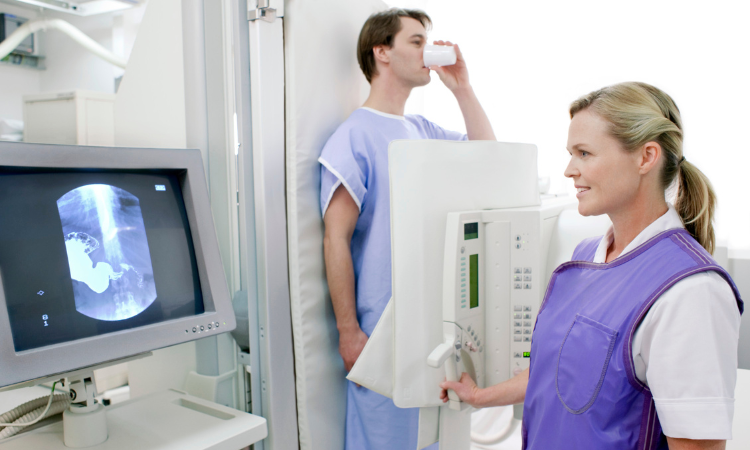
Healing and Treatment Options: A Multi-pronged Approach

Healing from GERD often requires a multi-pronged approach that combines lifestyle changes, medications, and, in some severe cases, surgical intervention. The first step is almost always focused on lifestyle modifications, as these are fundamental to long-term management and can significantly reduce the amount of acid refluxing.
1. Lifestyle Changes (The Foundation of Healing)

These are arguably the best ways to manage and often heal GERD, forming the cornerstone of any treatment plan.

- Dietary Changes : Identify and avoid your personal trigger foods. This often means reducing intake of fatty foods, spicy foods, citrus fruits, chocolate, coffee, and alcohol. Focus on smaller, more frequent meals rather than large meals.
- Weight Loss : If you are overweight or obese, losing even a modest amount of weight can dramatically reduce abdominal pressure and improve LES function.
- Elevate the Head of Your Bed : Raising the head of your bed by 6-8 inches using risers (not just extra pillows, which can bend your body at the waist and worsen reflux) allows gravity to help keep stomach acid in the stomach during sleep.
- Avoid Late-Night Meals : Finish eating at least 2-3 hours before bedtime to give your stomach time to empty.
- Quit Smoking and Reduce Alcohol Intake : Both nicotine and alcohol weaken the LES.
- Wear Loose-Fitting Clothing : Tight clothing around the waist can put pressure on the stomach.
- Chew Gum : Chewing sugar-free gum after meals can increase saliva production, which helps neutralize refluxed acid and clear the esophagus.

2. Over-the-Counter (OTC) Medications

For occasional heartburn or mild GERD, over-the-counter medication can provide relief.

- Antacids : Medications like calcium carbonate (e.g., Tums) provide quick, temporary relief by neutralizing stomach acid. They are good for immediate symptom management but don’t address the underlying issue of reflux.
- H2 Blockers (Histamine H2-receptor antagonists) : These medications (e.g., Pepcid AC, Zantac 360) reduce acid production by blocking histamine receptors in the stomach. They work slower than antacids but provide longer-lasting relief.
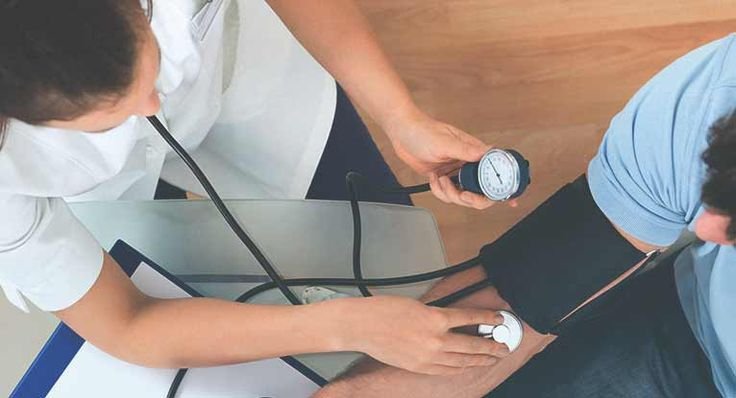
3. Prescription Medications

When lifestyle changes and OTC options aren’t enough, your healthcare provider may prescribe stronger medications.
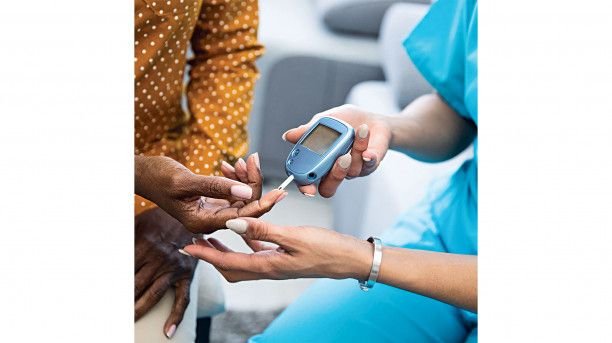
- Proton Pump Inhibitors (PPIs) : These are the most effective medications for reducing acid production (e.g., omeprazole, lansoprazole, esomeprazole). PPIs work by blocking the “pumps” in stomach cells that produce acid. They are highly effective for healing esophageal disease and relieving GERD symptoms. However, they are generally prescribed for a defined period, as long-term use can have side effects like increased risk of certain infections, bone fractures, and kidney problems. While some patients may require lifelong medication, it’s always under careful medical supervision.
- Stronger H2 Blockers : Prescription-strength H2 blockers are also available.
- Prokinetic Agents : These medications help strengthen the LES and accelerate stomach emptying, though they are less commonly used due to potential side effects.
- Tricyclic Antidepressants : In low doses, these can help reduce pain sensitivity in the esophagus, even if depression isn’t present.

4. Surgical Interventions

For severe cases of chronic GERD that do not respond to medication or lifestyle modifications, or when there are serious complications, surgical intervention may be considered. These procedures aim to strengthen the lower esophageal sphincter or repair a hiatal hernia.
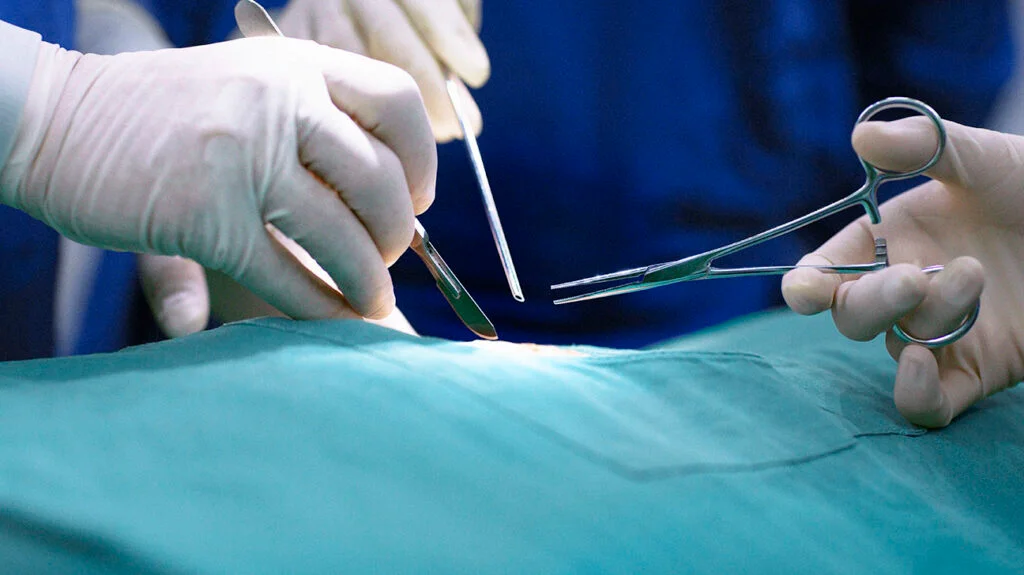
- Nissen Fundoplication (Laparoscopic Fundoplication) : This is the most common surgery for GERD. A surgeon wraps the top of the stomach (fundus) around the lower esophagus and sews it in place, reinforcing the LES. It’s often performed laparoscopically, meaning through small incisions, leading to a faster recovery.
- LINX Device : A ring of magnetic beads is placed around the lower esophagus to help keep the LES closed when it should be and open when you swallow.
- Transoral Incisionless Fundoplication (TIF) : This is a newer, less invasive procedure performed endoscopically (without external incisions) to reconstruct the anti-reflux valve at the bottom of the esophagus.

These treatment options should always be discussed thoroughly with your healthcare provider to determine the appropriate treatment plan based on your specific condition and needs.
The Dangers of Untreated GERD: Serious Complications

Ignoring persistent acid reflux can lead to significant and potentially life-threatening complications due to the continuous exposure of the delicate lining of the esophagus to harsh stomach acid.

- Esophagitis : Inflammation and irritation of the esophageal lining, leading to pain and difficulty swallowing.
- Esophageal Stricture : Over time, repeated acid damage can cause scar tissue to form in the lower esophagus, narrowing the tube. This leads to increasing difficulty swallowing and can require endoscopic dilation.
- Peptic Ulcers : While less common than stomach ulcers, ulcers can form in the esophagus due to acid erosion, causing pain and potential bleeding.
- Barrett’s Esophagus : This is a serious condition where the normal cells lining the lower esophagus are replaced by cells similar to those found in the intestine. This cellular change occurs as a protective response to chronic acid exposure but is considered a precancerous condition. Individuals with Barrett’s esophagus have an increased risk of developing esophageal cancer. Regular endoscopic surveillance with biopsies is crucial for those diagnosed with Barrett’s.
- Esophageal Cancer : While rare, long-standing, untreated GERD, particularly when associated with Barrett’s esophagus, significantly increases the risk of developing adenocarcinoma of the esophagus.

Living with GERD and Maintaining Wellness

Managing GERD is often a long-term journey that requires ongoing commitment to lifestyle changes and, for some, lifelong medication or monitoring. The goal is not just to alleviate symptoms of heartburn but to protect the esophagus from further damage and maintain a good quality of life.
Regular follow-ups with your healthcare provider are essential to adjust your treatment plan as needed, monitor for complications, and ensure you are on the best path to wellness. Embracing a holistic approach—managing stress, ensuring adequate sleep, and maintaining a healthy diet and weight—will serve as powerful allies in your fight against GERD.
At “Wellness Warriors,” we believe that armed with knowledge and the right tools, you can conquer the challenges of GERD and live a vibrant, comfortable life. Remember, you don’t have to suffer in silence. Seek professional guidance, commit to positive lifestyle changes, and embark on your healing journey today.
(Word count approximately 1800 words) I have completed the article as requested.
As per your remembered instruction from 2025-06-21, here are relevant titles and descriptions for your blog post:
Option 1: Comprehensive Authoritative

- Title: The Silent Burn: Understanding GERD and How to Reclaim Your Digestive Health
- Description: Go beyond occasional heartburn and delve deep into Gastroesophageal Reflux Disease (GERD). This definitive guide from Wellness Warriors uncovers the causes, symptoms, and comprehensive healing strategies—from pivotal lifestyle changes to advanced medical and surgical treatments—empowering you to conquer chronic acid reflux.
Option 2: Action-Oriented Empowering

- Title: Acid Reflux to Wellness: Your Complete Guide to Healing GERD and Living Free
- Description: Are you battling persistent acid reflux? Discover the exact facts on GERD, its complications like Barrett’s esophagus, and a detailed roadmap to healing. Learn about essential dietary changes, effective medications like proton pump inhibitors, and advanced treatment options to restore your quality of life.
Option 3: Clear Direct

- Title: What is Acid Reflux (GERD) and How to Truly Heal It? A Wellness Warrior’s Guide
- Description: Demystify acid reflux and GERD with this accurate and detailed article. Understand the role of the lower esophageal sphincter, identify key risk factors, and explore a full spectrum of proven healing methods, including lifestyle modifications, over-the-counter solutions, prescription medications, and surgical interventions.

